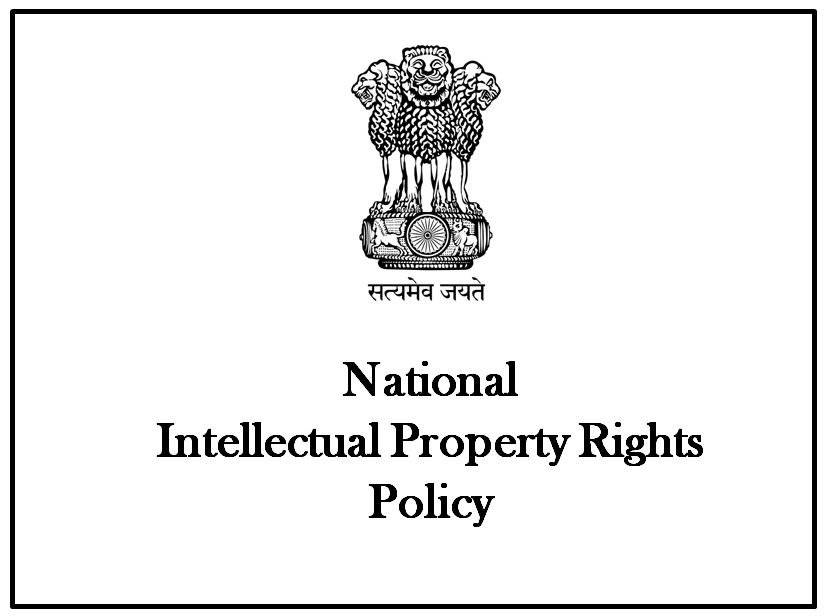On the 13th of May 2016, the Finance Minister, Arun Jaitley released the much anticipated National IPR Policy for India. The Union Cabinet on the 12th of May approved the National Intellectual Property Rights (IPR) Policy that seeks to lay the future road-map for intellectual property in India.
Arun Jaitely said that the policy aims to increase IPR outreach, speed up approvals, enhance commercialization, and enforce norms while ensuring that all aspects of the policy are in compliance with global norms.
Union Minister, Nirmala Sitharaman called the policy ‘a great step forward for India’. Sitharaman told PTI that “The policy envisages building capacities, institutions and awareness. It will encourage research and development for greater innovation and also look at traditional knowledge systems.”
DIPP Secretary Ramesh Abhishek was also quoted saying that “The policy would act as a road map to coalesce existing laws.”
The US Chamber of Commerce also commented on the policy calling the move a “precursor” to the “concrete, structural” changes necessary for the implementation of a strong innovation model.
In this part of the post we will take brief look at the objectives laid down by the policy. These objectives are as outlined below:
1. IPR Awareness: Outreach and Promotion: Under this objective the policy aims to create awareness among all sections of society about the economic, social, and cultural benefits of IPR. Knowledge on IPR is slated to be made a compulsory part of the curriculum in major institutions. In addition the policy identifies the need to reach out to the less-visible IP generators and holders, especially in rural and remote areas.
2. Generation of IPRs: The Policy notes that India has a large talent pool of scientific and technological talent spread over R&D institutions, enterprises, universities and technical institutes. To change and balance India’s growing foreign dependence, India needs to develop indigenous products. Focus will therefore be placed on facilitating researchers and innovators regarding areas of national priority. MSMEs, start-ups and grassroot innovators are also the primary target groups under this policy objective.
3. Legal and Legislative Framework: The policy seeks to strengthen the existing IP Laws in India. The policy notes that the present laws along with various judicial decisions provide a stable and effective legal framework for protection and promotion of IPRs. The new policy will therefore lead to stronger institutional monitoring mechanisms to curb IP offenses at the state level.
4. Administration and Management: The policy aims to modernize and strengthen service-oriented IPR administration. By 2017, the government aims to lower the average time for pending Patent applications to 18 months (down from 5-7 years) and trademark registration to one month (down from 13 months). An important administrative change includes the administration of the Copyright Act, 1957 and the Semiconductor Integrated Circuits Layout-Design Act, 2000 being brought under the aegis of DIPP, besides constituting a Cell for IPR Promotion and Management (CIPAM).
5. Commercialization of IPR: The policy aims to enable Indian companies to get value for IPRs through commercialization. The policy mentions that Entrepreneurship should be encouraged so that the financial value of IPRs may be captured. Existing mechanisms including Incubators and Accelerators set up to promote entrepreneurship should be strengthened with IP-oriented services. In this light, the policy identifies that efforts have to be made for the creation of a public platform to function as a common database of IPRs.
6. Enforcement and Adjudication: Protecting intellectual property with trademarks, copyrights and patents plays an essential role in monetizing innovation. Therefore the need for ensuring legal remedies to IPR owners seeking enforcement of their rights in the matters of infringement has been highlighted under this objective of the policy. The policy recommends that measures to check counterfeiting and piracy be identified and undertaken. It also notes that regular IPR workshops / colloquia at judicial academies and other fora for judges would facilitate effective adjudication of IPR disputes. Specialized commercial courts have been suggested to adjudicate on IPR disputes.
7. Human Capital Development: In order to harness the full potential of IPRs for economic growth, the policy seeks to develop an increasing pool of IPR professionals and experts in spheres such as policy and law, strategy development, administration and enforcement. Continuous policy research has also been identified as such research on empirical and topical IPR areas of relevance with an interdisciplinary perspective at the national and international level will enrich the process of policy, law, strategy development and international negotiations at the government and organizational levels.
In the second part to this post, we will bring you some of the salient features of the National IPR Policy. Meanwhile, the National IPR Policy can be downloaded from here.
Authored by Gaurav Mishra.
Sources: DIPP, Press Information Bureau.



